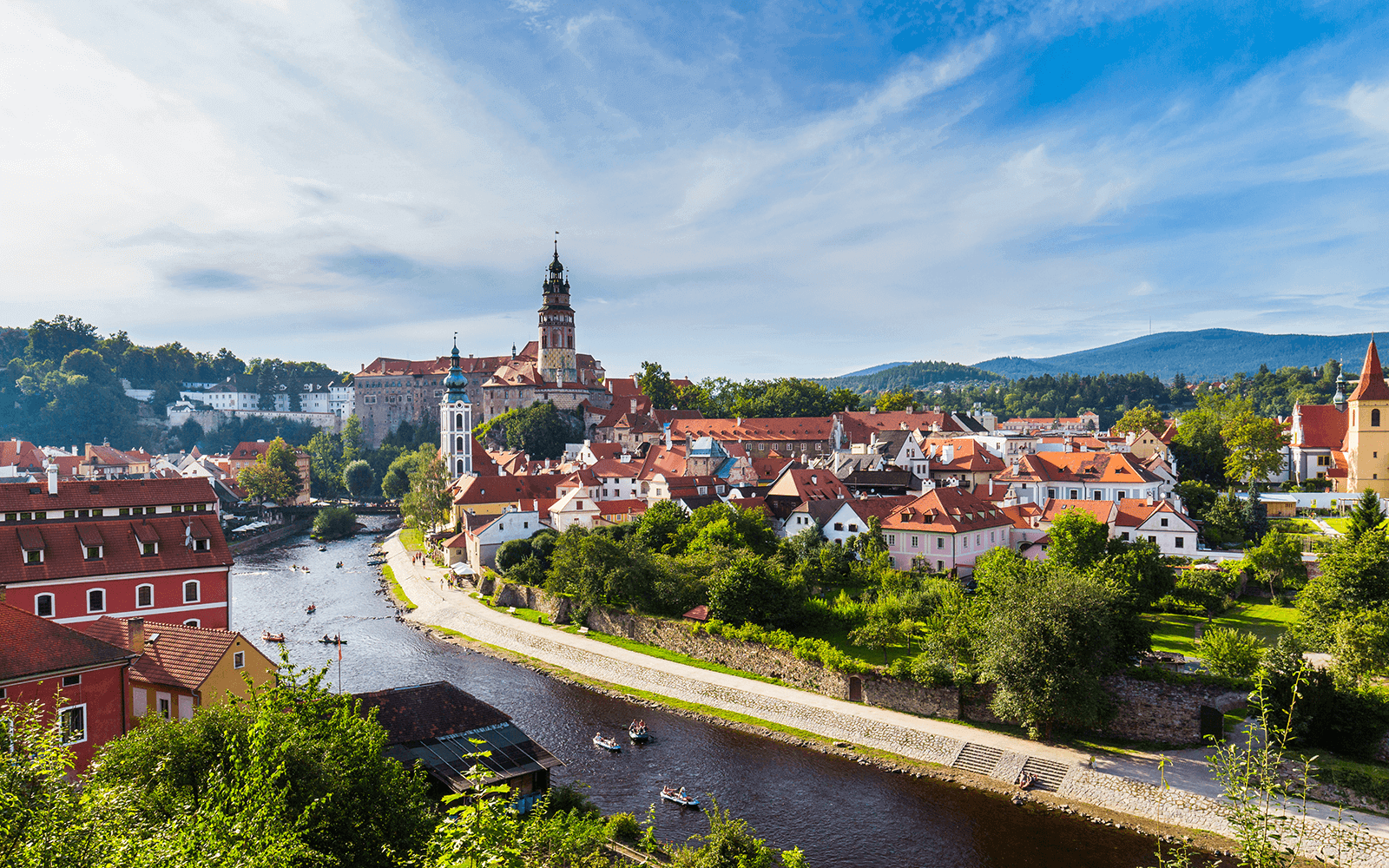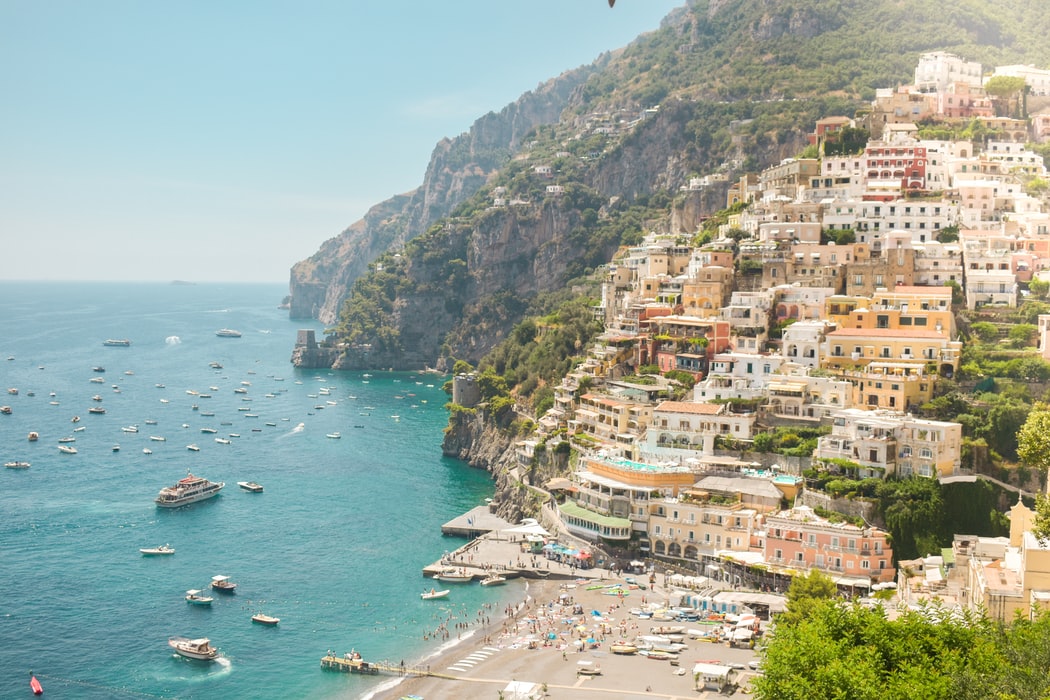Experts + Insiders
Europe
Published on December 13, 2017
A Castle Tour of the Czech Republic
By Lewis Evans
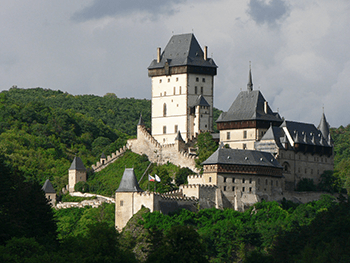
If you’re an architecture enthusiast with a high tolerance for fortified buildings and seemingly impenetrable walls, it’s safe to say you’ll love the world capital of castles, the Czech Republic. The country is positively teeming with them—with over 2,000 castles in the country, it has the highest density of castles in the world.
But why so many darn castles, Lewis? you may be asking. I’m no historian, but, here’s a totally plausible explanation: with a prime location in the heart of Europe, it goes without saying that, with political turbulence and surrounding conflicts, a strong defence was necessary.
Furthermore, the land that is now the present-day Czech Republic has had its territories and maps drawn and redrawn as part of the former—oh, take your pick—Czechoslovakia, the Kingdom of Bohemia, the Austro-Hungarian Empire, the stomping grounds of the Habsburg monarchy, and the battleground of the Thirty Years’ War, among others. With a lot of potential conflict brewing within and without its fluctuating borders, naturally, defences had to be built. And with the ever-changing procession of rulers and religions, the region was teeming with all sorts of highfalutin titles: Holy Roman Emperors, kings, archdukes and more. It goes without saying that a castle befitting one’s family title was de rigueur.
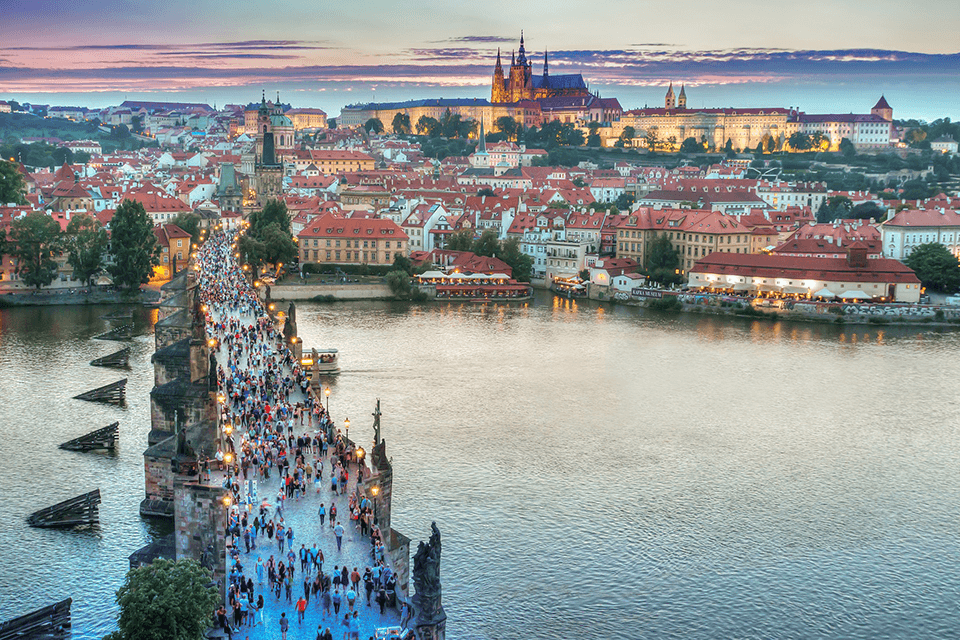
Prague Castle: Bohemian Behemoth
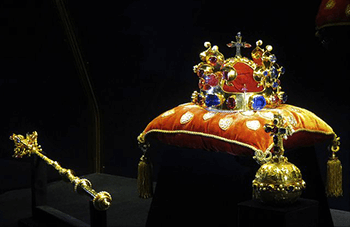 There are castles, and then there’s Prague Castle. The largest ancient castle in the world, it dates back to the 9th c. This sprawling complex occupies 70,000 square metres (750,000 square feet), and is the official home of the President and First Lady of the country.
There are castles, and then there’s Prague Castle. The largest ancient castle in the world, it dates back to the 9th c. This sprawling complex occupies 70,000 square metres (750,000 square feet), and is the official home of the President and First Lady of the country.
It’s long been a seat of power, having housed the kings of Bohemia (that long-gone state), Holy Roman emperors, and presidents; you’ll also find the riches of the Bohemian Crown Jewels located in a hidden room here. It’s a stunning view at night; also, from anywhere in the castle grounds, you can always see the cathedral of St. Vitus from most vantage points. A bit of historical trivia: Adolf Hitler stayed here for an overnight in March 1939, shortly after Nazi Germany forced then-Czech President Emil Hacha to hand the nation over.
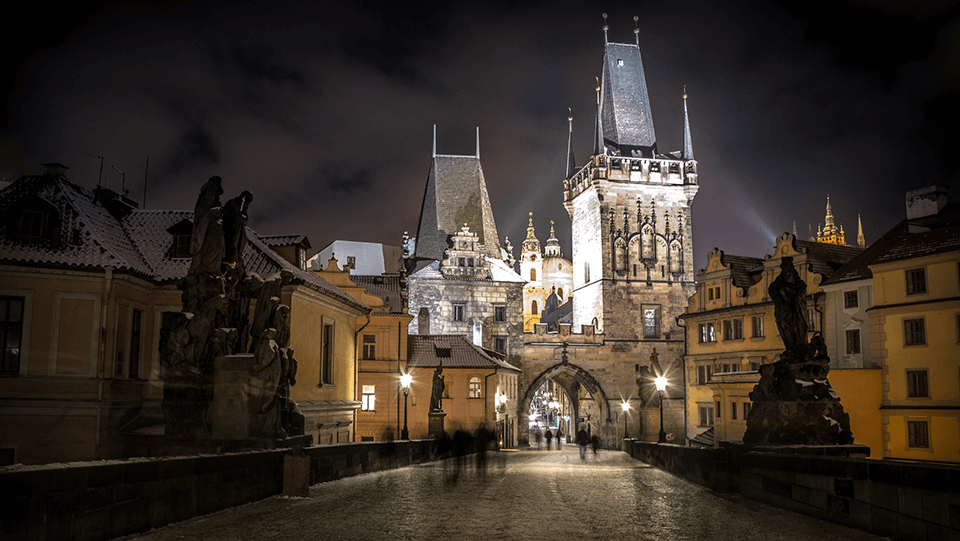
Karlštejn Castle: A gruesome history
Just southwest of Prague, dramatically soaring atop a rocky promontory, this 14th c. castle was built in a Gothic style by Charles IV, the Holy Roman emperor-elect and then-king of Bohemia. The castle once housed the Imperial Regalia, as well as the Bohemian/Czech crown jewels and holy relics.
Some of its history includes an episode of early biological warfare by the Hussites in 1422 during a castle siege when the Hussites used catapults to throw dead bodies and 2,000 carriage-loads of animal dung over the ramparts in the hopes that infection would spread. (As you might imagine, it did indeed). There is also a well tower that channels underground water into the castle; a defensive weakness that was known only to the Emperor and his top official. The miners who dug this tunnel were purportedly killed (yikes!) when their construction efforts were completed.
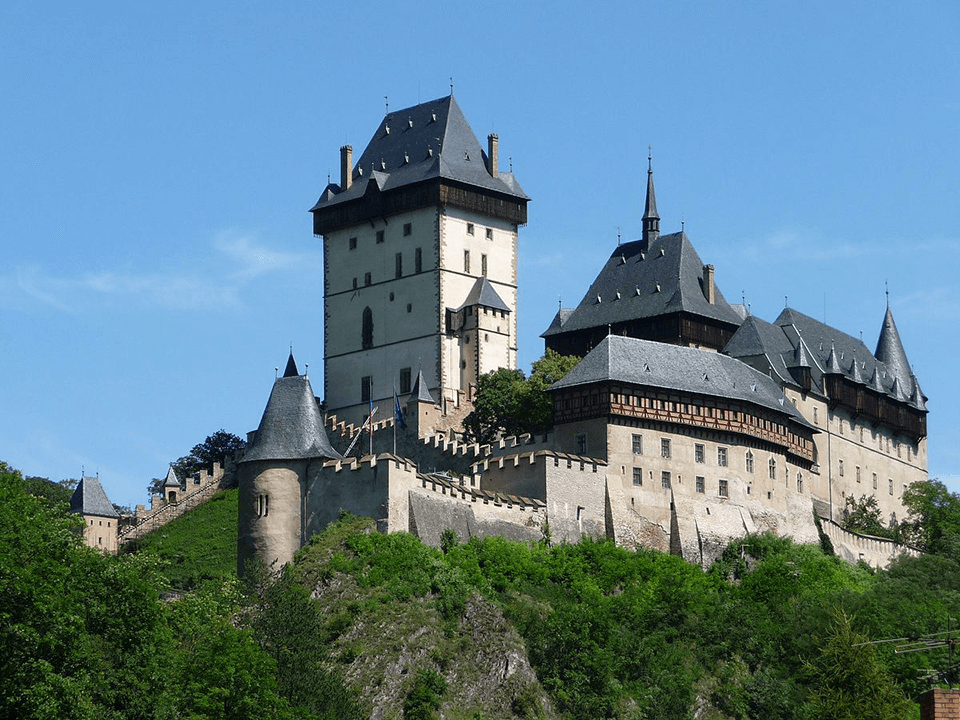
Hluboká Castle
One of the country’s prettiest castles, with its slate-grey/white exterior and stately lines, Hluboká Castle has seen a lot of makeovers, from its initial 13th c. Gothic bones to its expansion and rebuilding in a Baroque style. Finally, in the 19th c., at the insistence of Adam Franz von Schwarzenberg (one of the key families known as ‘the princes of the Holy Roman Empire’), its looks were reconstructed to resemble the romantic style of England’s Windsor Castle.
There is also a lovely English-style park on the castle grounds. The last Schwarzenberg owner fled in 1939 to escape from the Nazis; as a result, the Czechoslovakian government seized the property at the end of the Second World War. The castle has been featured in a few movies, including Shanghai Knights and Underworld: Blood Wars.
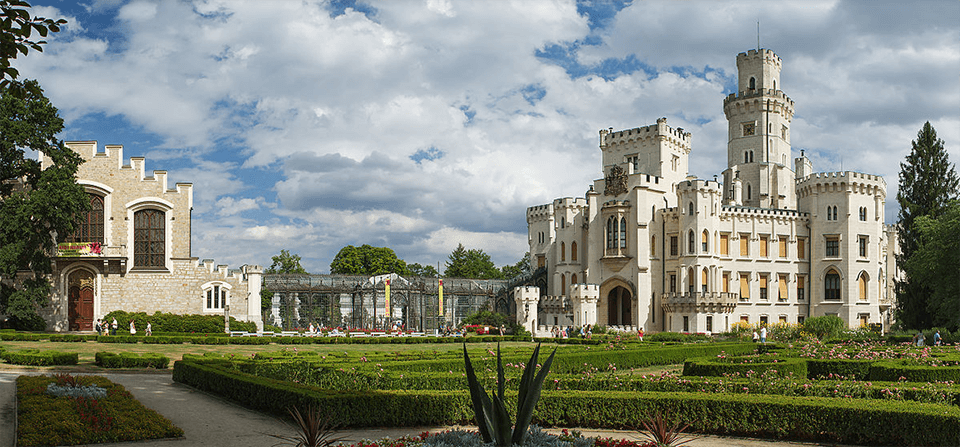
Český Krumlov Castle
Amidst the red-roofed town and well-preserved UNESCO World Heritage surroundings, this castle dates from 1240. With over 40 courtyards and gardens, it is unusually large for the surrounding town; one of the largest castles in the country, it’s dwarfed by none other than Prague Castle. On its grounds, you will find a remarkably well-preserved Baroque theatre, which is open to the public only twice a year for a Baroque opera performance. As with Hluboká Castle, the last owner was from the Schwarzenberg family; the property was seized by the Gestapo in 1940 and then confiscated by the Czechoslovakian government in 1945. Today, it’s owned by the state. You may have seen the castle in the films The Illusionist or Hostel.
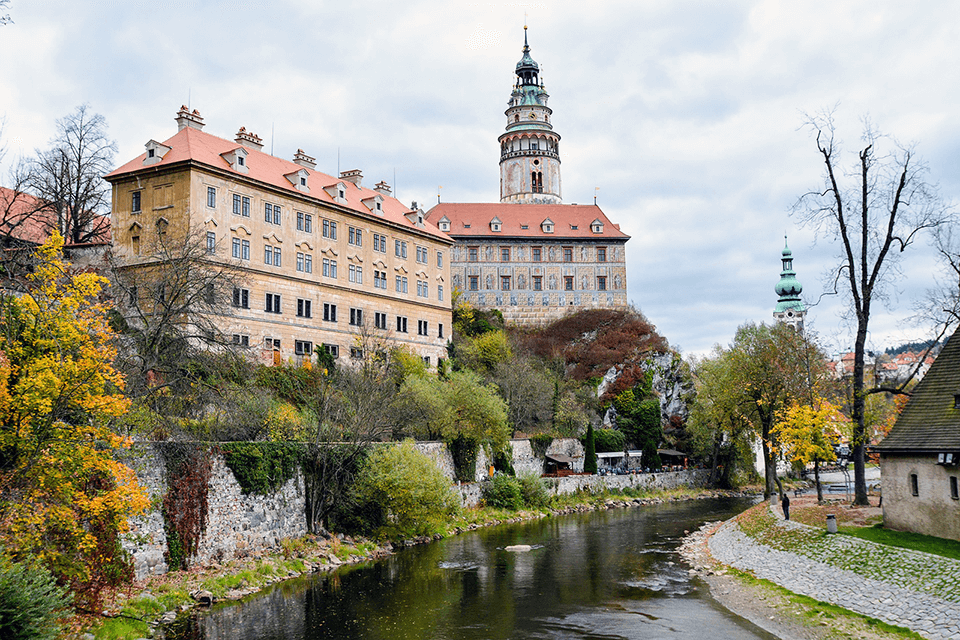
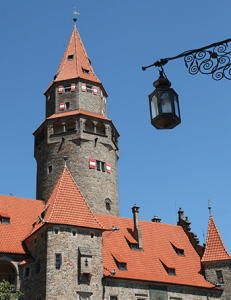
Bouzov Castle
This romantic-looking castle was built at the turn of the 14th c. as a safeguard over a popular trade route, and thus occupied a defensive role in the landscape. Various families changed ownership of the castle, including Jiří z Poděbrad, crowned the Czech king in 1458, and the ruling Habsburg family.
During the Thirty Years’ War, the castle was taken over by Hussites and used to imprison captured Swedes. It burned down in 1558; after much remodelling and building, its current Neogothic exterior (and swanky modern plumbing and central heating!) debuted between 1895 and 1910 (thanks to a Habsburg archduke). Once more, during the reign of the Nazis, the castle was confiscated and looted in the 1940s, ultimately returning to the Czech Republic.
Feeling inspired to witness the grandiose of Czech Republic’s castles for yourself? Get in touch with a member of our team to see how we can start planning your next trip here.
